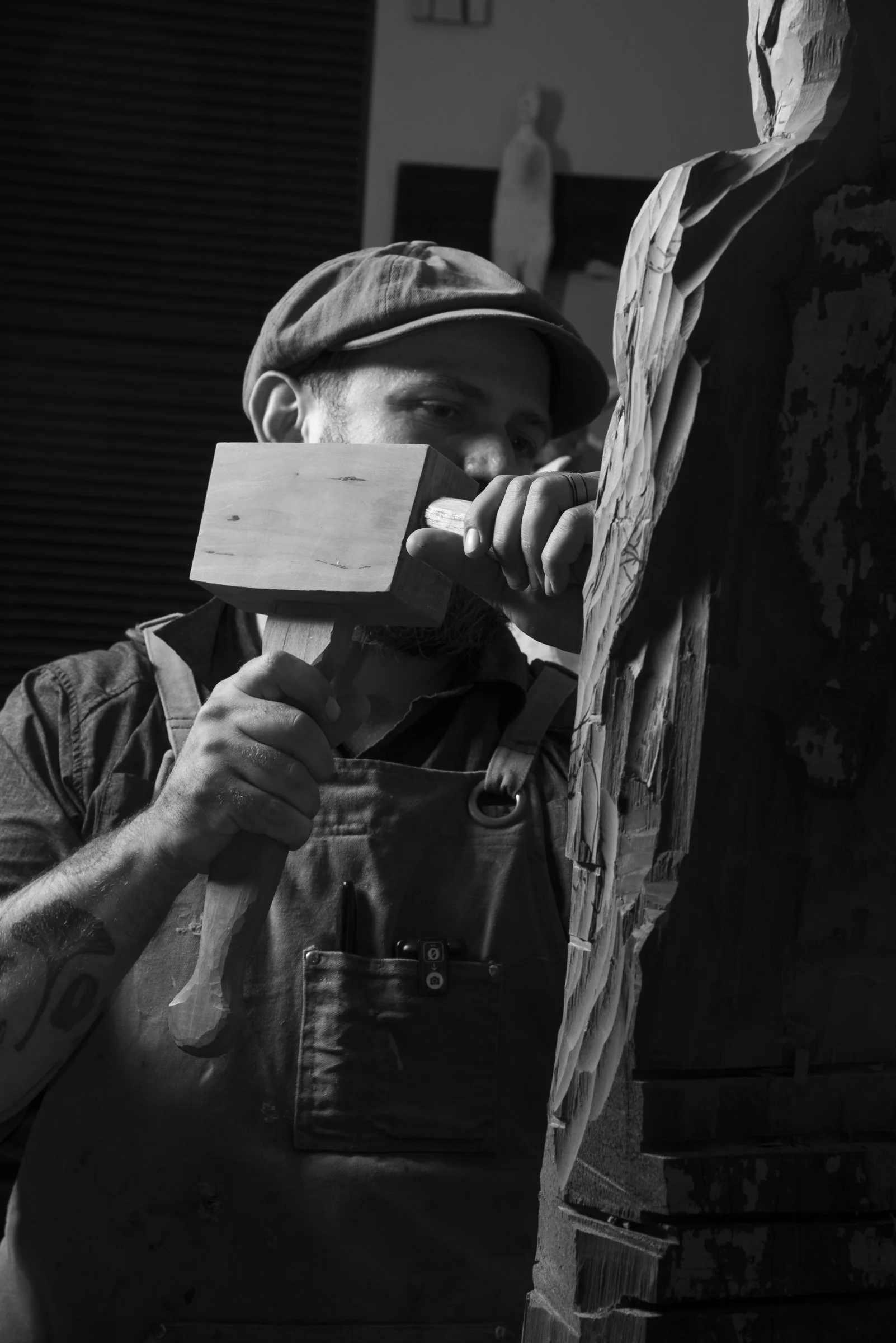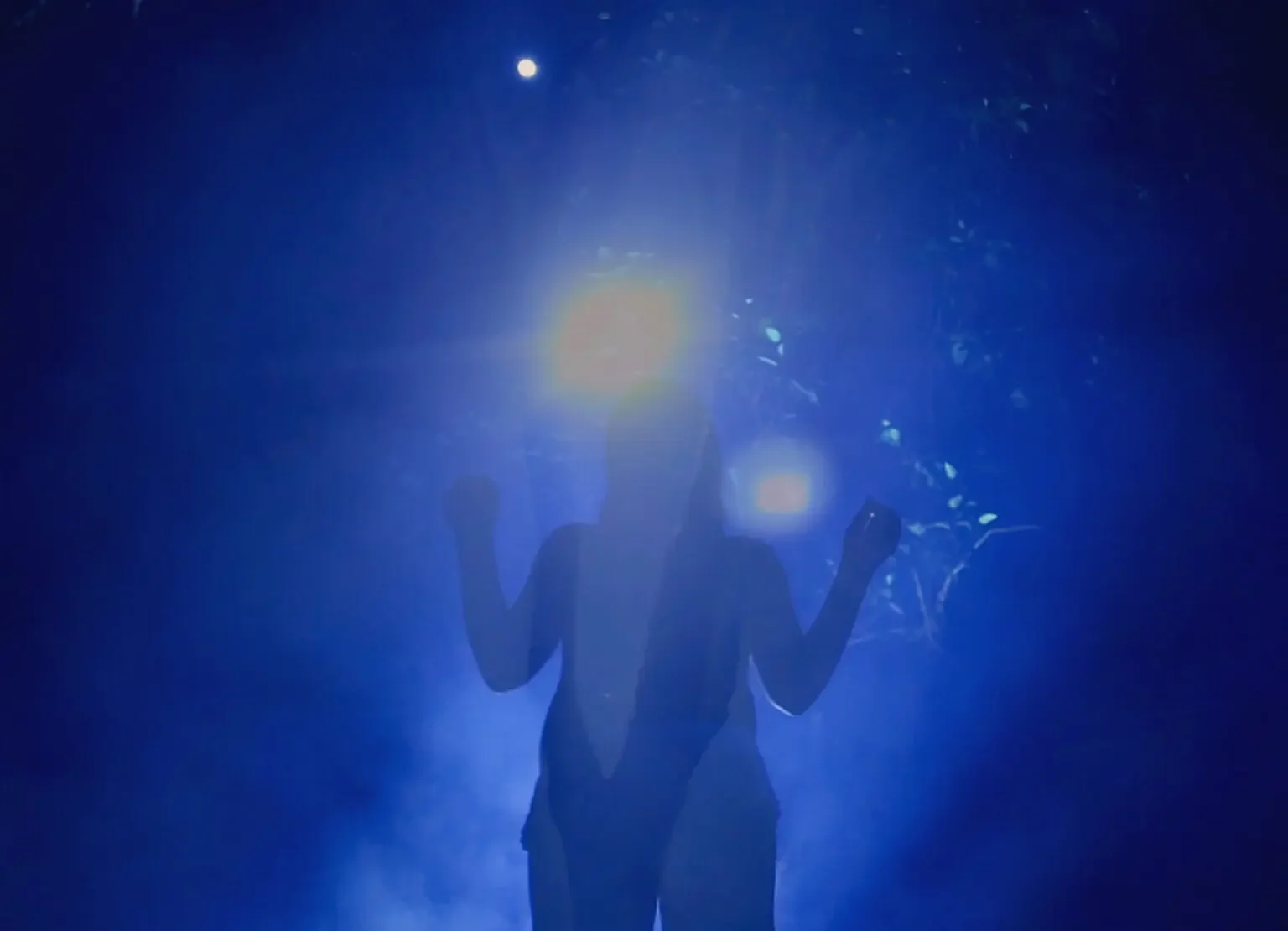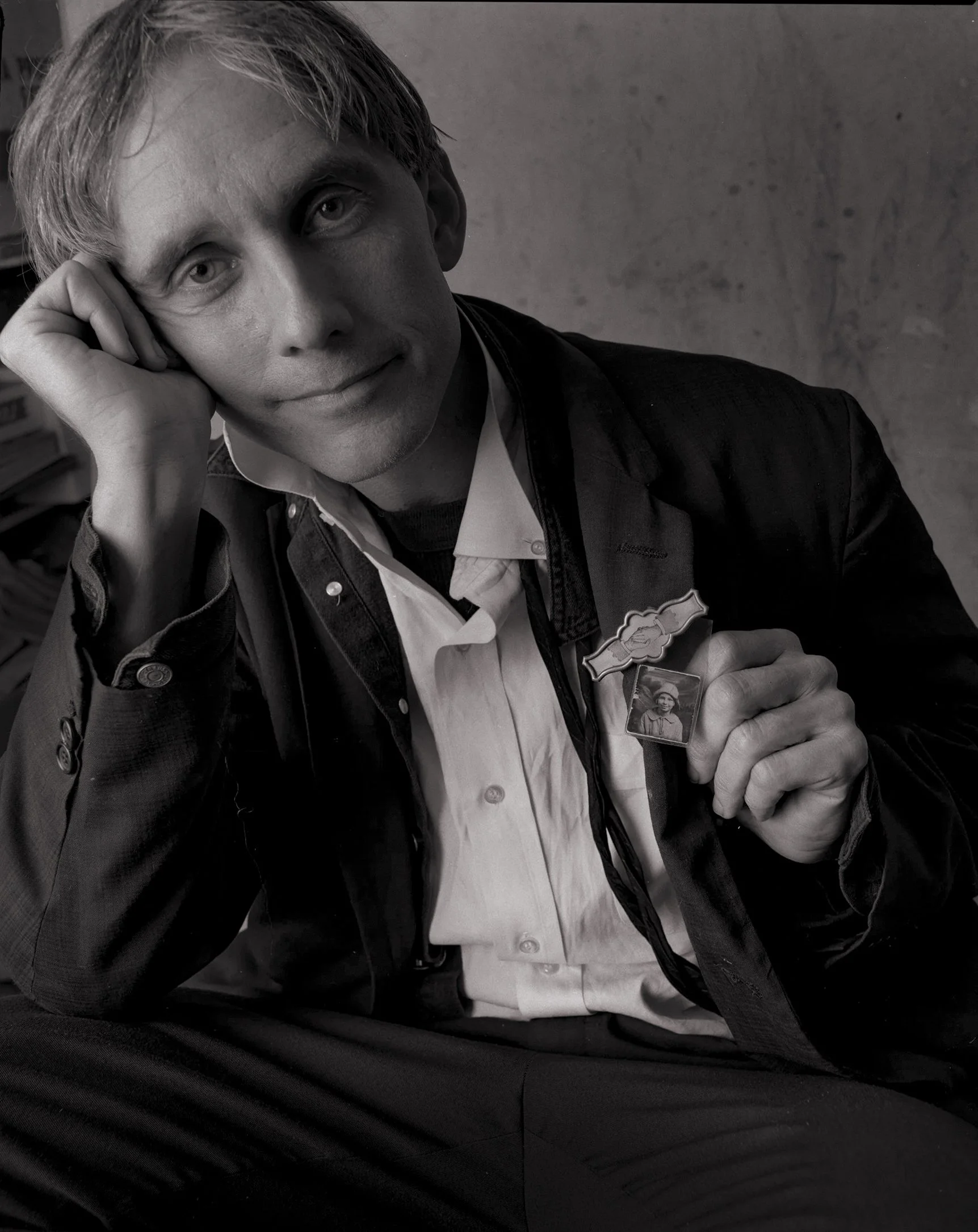Profile on Anil Thambai by Kathryn Morris
Anil Thambai’s works are products of his environment. Growing up in southern India, Thambai was introduced to writers, philosophers, and artists through his family. What this produced was a young man interested in his Indian culture and the provenance of said cultural experience. We see this “re-visitation” of India in both of his pieces at the gallery. In “From Bombay to Thane” we see trains, elephants, mountains all coming together to produce a surreal environment situated in a yellow lake. This shifting of reality is seen in his other piece at the Gallery entitled “Bombay Cat” where a “desi” and “ferangi” stand side by side in the water with a small cat between them. What we learn when speaking with Thambai is that he is picking and choosing aspects of history, finding images that represent these elements and melding them together. The marriage of these historical happenings produces the wonderfully charming and intriguing works that the Gallery currently houses.
Who were the most influential artists for you in the development of your work? What else has influenced you?
I was born and brought up at Kasaragod on the northern Kerala border. In Karsagod, known as the house of seven languages or “cultural linguistics”, people speak seven languages, which for me was the main influence in my work.
My art career started with my unfinished Bachelor of Commerce degree. My cousin who was studying fine arts in college influenced my adolescence. He showed and taught me about Goya, Magritte, Bruegel, and Bosch, etc. In my hometown there was a small library that allowed me to read the novels and stories of famous Malayalam writers such as Mukundan, V.K. N., O.V. Vijayan. I also read works by Orwell, Kafka, Hemingway, Hesse, and Saki.
I began to approach painting seriously while I was receiving my Bachelor degree in fine arts in Trivandrum. The Trivandrum school followed figurative traditions; this tradition is obviously seen in my paintings. In addition, the Trivandrum international film festival was a major factor that allowed me to see international films. In particular, I like Emir Kasthurica’s satire and humor.
For my master’s degree I moved to Baroda in 2005. Baroda College of Art opened me up to a variety of visual languages. From Paul Delaroche’s historical scenes to Courbet’s painting “The Studio”; these taught me to think about how dissimilar characters, time, and history can come together in a single frame. Kara Walker’s black images and Ryuki Yamamoto’s crowd composition taught me this lesson as well. Mughal miniature paintings and Pithora paintings influenced me to compose images on a small format. Moreover, I was influenced by Edward Said, Mikhail Bakhtin, Fredric Jameson, Derrida and the photographer Margaret Bourke-White, all of whom encouraged me to revisit history.
Please comment on your material and techniques
In my recent works, I have been painting some areas of the canvas with oil colors and some areas with color powder that is a mix of glue and marble dust. I also have done drawings, watercolors, video art and site-specific work.
What are some of the landmark pieces in your career?
Margaret Bourke-White and Homai Vyariwalla’s photographs of the pre-independence of India by influenced me. I began collecting photos about colonial India. The black and white as well as the partition of the photograph gives a sense of depth that has inspired me to give these images mileage in my language
I look to history in order to re-read, re-visit ideas that have a specific context in the contemporary social structure. My goal is to initiate visual dialogues of such ideas through the use of historical images that transcend time and space. The faction about trauma and tragedy in “Train to Pakistan” by Khushwant Singh influenced me to make a series of works entitled “From Bombay to Thane.” This series was my first attempt to involve historical ideas in into the titles of my paintings.
Another series I had was entitled “I thought it is Blood” which started after receiving my master degree in painting. For this series I collected photographs of colonial India. I was influenced by Kara Walker’s black images on white space. Here, though, I use mainly black and white but also use red when needed for emotion. I approached semi realism to break with the notion of photo-realism.
These paintings entitled “International Biennale” (2009), “Ultimate Cool” (2008) and “Omission and Admission” (2010; They deal with the fusion of different artistic practices from different periods yet combined in a single frame. These references help me to camouflage the cultural and social critique that I want to put forth in my works. The subtle references of popular images from art history help these works to have a universal appeal. The painting “Ultimate Cool” was the first painting that I used this iconography for the symbolic representation of different classes and societies. The idea comes from the functions of a refrigerator. The object was more familiar in the soda shops rather than at home. During that time, though, Coca-Cola factories were locked by the people’s strike against water pollution.
The painting “International Biennale” I placed a huge Tsunami wave with images from art history around it in a pond. The pond image is a reference to south Indian temple pond architecture.
I approached the painting “Omission and Admission” in three ways when I began the work. First, I tried to bring three-dimensional images into two-dimensional spaces through the huge sculpture park. Secondly, I wished to discuss historically a civilization and river. Lastly, I faced a self-criticism regarding the selection of omission and admission in the piece.
The people in my village spend their time discuss various politics in the barbershop, teashop, the village library etc.: this is the primordial form of social networking. People discuss topics such as globalization and local issues. These issues inspire visual imagery for me. Nowadays I do more drawing on small format paper.
Each drawing deals with a different context. “Napoleon crossing Alleppy” is a local is a “local” version of my thought influenced by Delaroche’s “Napoleon Cross the Alps.” Sometimes the process of creating a piece is very individual. For me, though, it’s not too personal. Every so often an idea just clicks or an idea leads me to another idea that leads me to a completed piece.
Can you elaborate on the works in the current show at the Linda Matney Gallery? Are these single images or part of a larger series? How do these pieces fit in your body of work?
It is part of a series. The gallery is showing two of my works that are a part of my “Colonial Series.” They are entitled “From Bombay to Thane” and “British Bombay Cat.”(shown at top of blog). The later shows a black cat between a desi and firang gent that is meant to induce both thought and laughter. Both works began with their titles that have a close historical connection to the colonial period of India. Visually, though, I am not interested in narrating real history. Sometimes in my work, words and titles do not necessarily describe the image. I often come up with the name of my work before I come up with the images. Mismatched words are often juxtaposed to create new meanings similar to “colorless green ideas sleep furiously”, the famous example of a grammatically correct but semantically nonsensical sentence proposed by Chomsky.
Comment on the progression of your work over the near future.
I obviously have lots of plans. I’m busy with working and researching. Recent works are involved in the overlaps of history, art history iconography, meanings, meanings, and language. I use a polyphony of languages: a great melting pot of history and parallel cultural contexts that lead to one great melee of meaning. Sometimes images of reversal give me energy similar to “a carnival sense of the world.” As Mikhail Bakthin said “Carnivals allow the common people to voice their ‘protest’ through humor and satire.”




















![Nam1[3].jpg](https://images.squarespace-cdn.com/content/v1/520e5a8ee4b0126d6009073a/1382377248933-BBANO7CDFFNHERUQSTDS/Nam1%5B3%5D.jpg)

